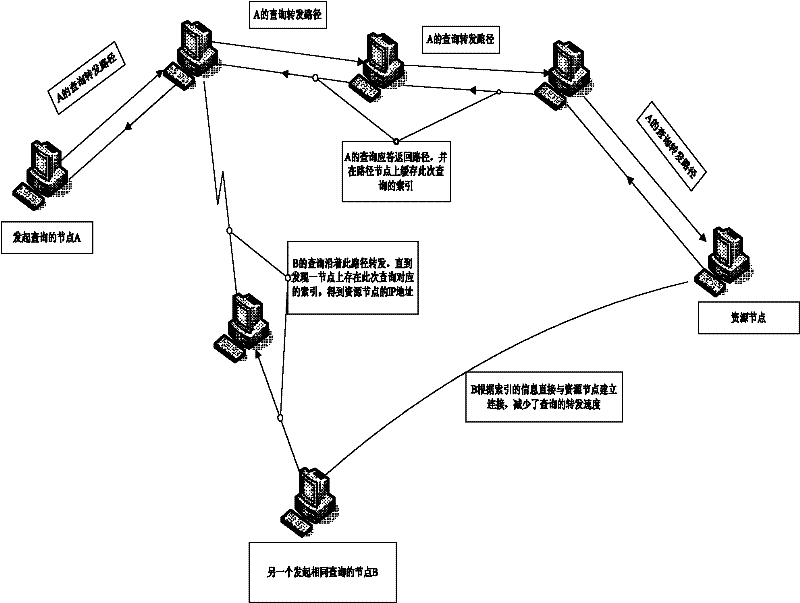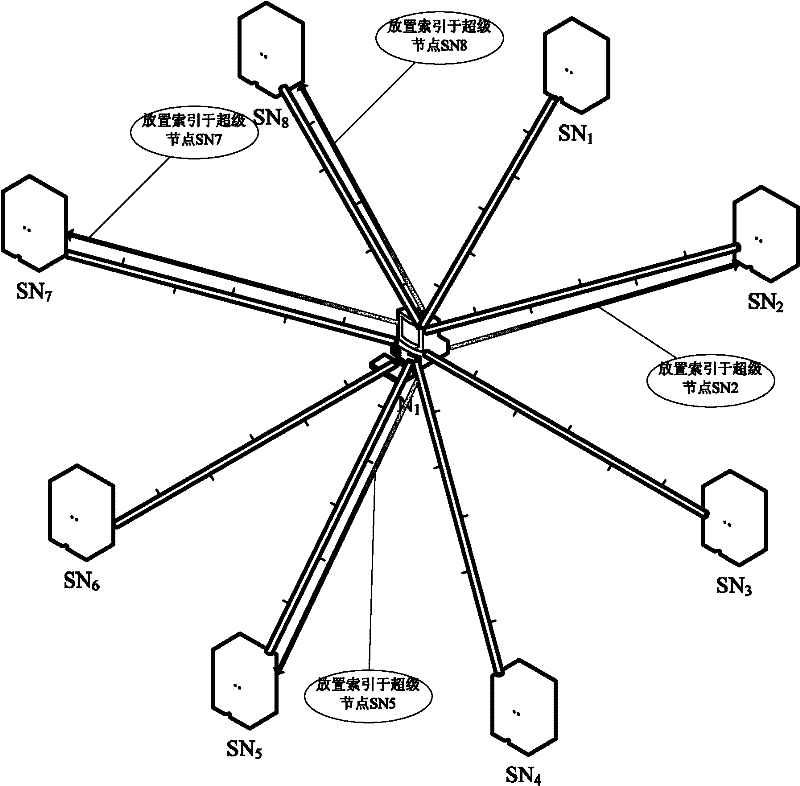Method for optimal placement of unpopular resource indexes in peer-to-peer network
A peer-to-peer network and resource indexing technology, which is applied in the field of network search optimization and resource placement optimization, and can solve the problems that nodes cannot carry cache and affect network scalability.
- Summary
- Abstract
- Description
- Claims
- Application Information
AI Technical Summary
Problems solved by technology
Method used
Image
Examples
Embodiment Construction
[0046] A peer-to-peer network is composed of a group of terminal devices connected to the network. These terminal devices can be general household desktop computers, portable notebook computers, small servers with better performance, or servers in a small area. Each node in the peer-to-peer network. Each device has the function of data routing, and records its own resource visits, its online time and other information at the same time. Each device sends information to surrounding nodes when the network is running, including information about the time when the node is online and offline, identity information, and index placement request information. Each node selects a specific node for index placement based on this information.
[0047] Index placement can improve the search success rate of resources in the peer-to-peer network and reduce the generation of redundant information during information search. Such as figure 2 As shown, node A first sends out a search for a resource,...
PUM
 Login to View More
Login to View More Abstract
Description
Claims
Application Information
 Login to View More
Login to View More - R&D
- Intellectual Property
- Life Sciences
- Materials
- Tech Scout
- Unparalleled Data Quality
- Higher Quality Content
- 60% Fewer Hallucinations
Browse by: Latest US Patents, China's latest patents, Technical Efficacy Thesaurus, Application Domain, Technology Topic, Popular Technical Reports.
© 2025 PatSnap. All rights reserved.Legal|Privacy policy|Modern Slavery Act Transparency Statement|Sitemap|About US| Contact US: help@patsnap.com



